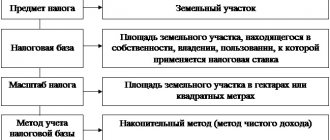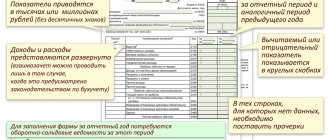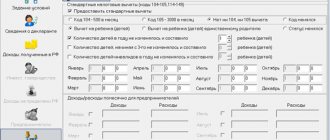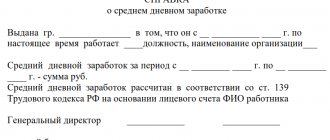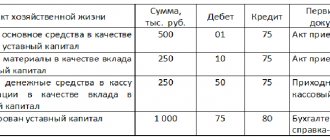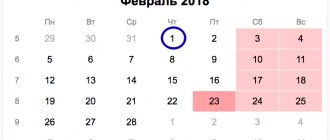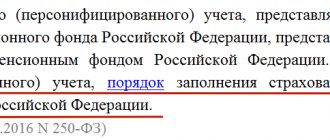Not every willing entrepreneur or legal entity can switch to the “simplified” system. To do this, certain requirements must be met (they are established in the Tax Code):
• number of enterprises – no more than 100 people; • lack of branches; • the amount of revenue for the year does not exceed 150 million rubles; • residual value of fixed assets – no more than 150 million rubles; • share of third parties in the authorized capital – no more than 25%.
An organization that meets these requirements can submit an application to the Federal Tax Service at the place of registration to switch to the simplified system. This must be done within a month after the termination of activities subject to UTII or no later than December 31 of the current year, in order to keep records on the simplified tax system from the next day.
There is one nuance in the transition: if revenue from the beginning of the year exceeds 150 million rubles, you will have to return to OSNO, and from the beginning of the quarter when this limit was exceeded.
There are also restrictions on types of activities: for example, organizations producing goods subject to excise taxes cannot switch to the simplified tax system. It is also impossible to choose between UTII and simplified tax system: if an activity falls under UTII, there are no other regimes for this type of activity. However, enterprises operating in different areas, some of which are subject to UTII, and some not, will have to keep separate records and submit both a declaration under the “imputed tax” and reporting under the simplified tax system.
Is it necessary to submit a balance sheet under the simplified tax system?
The question of whether a company submits its balance sheet to the simplified tax system arises quite often. The fact is that previously such enterprises were exempt from accounting. However, several years ago, changes were made to the legislation obliging any company to submit reports. Therefore, it does not matter which tax object the company has chosen. The balance under the simplified tax system “income” or “income minus expenses” still needs to be filled out and submitted within the deadlines established by law - before March 31 of the next year (clause 5, clause 1, article 23 of the Tax Code of the Russian Federation).
Applicable form
Forms of financial statements are given in Order of the Ministry of Finance dated July 2, 2010 No. 66n. On June 1, 2019, changes came into force (approved by Order of the Ministry of Finance dated April 19, 2019 N 61n) concerning the applicable forms. Two forms of balance remain relevant:
- regular;
- simplified.
The organization decides independently which balance sheet to fill out under the simplified tax system, taking into account the current legislation when choosing.
What balance is submitted to the simplified tax system?
In a simplified form, unlike the usual one, all indicators are indicated in a larger scale, without fine detail. It can be used by the enterprises named in paragraph 4 of Art. 6 of the Law on Accounting dated December 6, 2011 No. 402-FZ. In particular, small enterprises can choose a simplified reporting option if there are no other restrictions for them established by Art. 6 of Law No. 402-FZ, for example, mandatory audit. Most often, the balance sheet of an LLC using the simplified tax system is prepared in a simplified form.
You can check whether an LLC on the simplified tax system is a small enterprise under Art. 4 of the law of July 24, 2007 N 209-FZ.
Simplified chart of accounts for the simplified tax system “income” and “income minus expenses”
Taking into account the fact that companies using the simplified tax system are allowed to use simplified accounting methods, the chart of accounts is also allowed to be used in an abbreviated form. This means a reduction in the number of synthetic accounts in work under the simplified tax system according to the principle of rationality:
- inventories are recorded on the account. 10 (including those that are reflected in accounts 07, 11 in ordinary accounting);
- production costs are not distributed across accounts. 20, 23, 25, 26, 28, 29, 44, and are summed up on the count. 20;
- finished products and goods are reflected in the account. 41;
- Cash in banks is reflected in the account. 51;
- the debtor and creditor are collected on the account. 76;
- The company's capital is reflected in the account. 80;
- sales, other income and expenses and the final financial result are collected on the account. 99.
We can conclude that companies use chart of accounts accounts under the simplified tax system based on income or according to the “income minus expenses” scheme selectively.
Important! It is necessary to approve the abbreviated chart of accounts under the simplified tax system, which is used by the company, in the accounting policy.
The differences between simplified and classical accounting, which affect the rules for filling out the balance sheet when simplified, are collected in the table:
| Conditions | Simplified method | Classic way |
| Chart of accounts |
|
|
| Balance lines |
|
|
| Completeness of balance sheet accounting forms |
|
|
Filling out the balance under the simplified tax system
Rules have been established for reporting (approved by order of the Ministry of Finance dated July 29, 1998 No. 34n), for violation of which the company can be fined. For example, you must comply with the following requirements:
- about the reliability and completeness of the report;
- filling out lines without collapsing items on assets and liabilities, profits and losses.
The amount of assets and liabilities indicated in the final lines of the balance sheet under the simplified tax system must match. If there is a discrepancy between the totals of assets and liabilities, the form is filled out incorrectly.
How to fill out a balance sheet using the simplified tax system in 2021
To draw up a balance sheet, data is taken on the last day of the reporting year from the balance sheet. To reflect assets (current and non-current assets), 5 main indicators are used, for liabilities (liabilities) - 6. All row data is indicated in thousands of rubles. To make it easier to understand how to reflect information in the balance sheet, we will give an example of how to fill it out.
Basic recommendations
The balance sheet, as one of the reporting forms of the simplified regime, must be submitted to the Federal Tax Service and Rosstat before April 1 of the next year.
Failure to submit the reporting form is fraught with administrative liability: a fine of 200 rubles for an overdue document for the tax authorities and up to 5,000 rubles for statistical authorities. A distinctive feature of the simplified balance sheet is the reflection of financial information in an enlarged manner: each line contains aggregate information of an entire group of items. Rounded values are indicated in thousands or millions of rubles.
The balance sheet formed by the simplifier contains two sections - active and passive items. An asset characterizes the subject’s property, its composition and value. The passive, in turn, reveals the sources through which the property was acquired. An indispensable condition is the equality of assets and liabilities.
The document is formed on an accrual basis as of the reporting date in dynamic comparison with data from similar periods of previous years: the 2021 balance sheet will contain information as of the end of the current year, December 31, 2021 and 2021.
Before drawing up form 0710001, it is necessary to close (reform) accounts 90, 91 and 99 with the formation of a final balance, which will subsequently serve as the basis for the balance sheet.
Balance sheet for simplified tax system - example
Usually, when drawing up a balance sheet, small companies have difficulty with where to include certain income and expenses. In order to understand more clearly how to draw up a balance sheet for an LLC using the simplified tax system, we will do without “debits/credits”, but will try to explain as simply as possible how to draw up a balance sheet in a simplified form.
Vympel LLC is engaged in wholesale trade. The company was organized at the beginning of 2021. The organization uses the cash method of accounting. Authorized capital 10 thousand rubles. The company spent the entire amount of money received from the founder as a contribution to the management company on the purchase of goods. At the end of the year, the LLC has the following indicators:
- fixed assets (fixed assets) with a useful life of 4 years were purchased - 160 thousand rubles;
- expenses include 50% of the cost of fixed assets (depreciation) - 80 thousand rubles;
- there are goods worth 120 thousand rubles in the warehouse;
- there are 78 thousand rubles in the current account, there is no cash left in the cash register;
- purchased goods from suppliers in the amount of 5,320 thousand rubles;
- goods were sold for the amount of 6,410 thousand rubles (5,200 rubles plus a trade margin of 1,210 thousand rubles); at the same time, the buyers have a debt in the amount of 141 thousand rubles;
- received for goods delivery services from customers - 37 thousand rubles;
- spent on gasoline and fuels and lubricants - 50 thousand rubles;
- transport tax paid - 15 thousand rubles;
- staff salaries were accrued in the amount of 600 thousand rubles, the balance of wages unpaid at the end of the year was 60 thousand rubles;
- personal income tax accrued - 78 thousand rubles, the balance of unpaid tax - 8 thousand rubles;
- compulsory insurance premiums were accrued - 195 thousand rubles, 25 thousand rubles remained unpaid at the end of the year;
- other expenses of the company (stationery, bank commission for maintaining and servicing a current account, household goods) amounted to 40 thousand rubles;
- debt to suppliers for goods at the end of the year - 73 thousand rubles;
- to replenish working capital, the organization took out a short-term loan for 6 months, the outstanding balance on which at the end of the year was 112 thousand rubles;
- At the end of the year, tax under the simplified tax system was not paid - 6 thousand rubles.
How to group these indicators in the balance sheet of Vympel LLC?
Assets:
- Tangible non-current assets (line 1150) include installation equipment and fixed assets at their residual value. The residual value of fixed assets is: 160 – 80 = 80 (acquisition cost minus depreciation expensed).
- There are no intangible, financial or other non-current assets (for example, licenses, shares) in the LLC, so line 1170 is not completed.
- Inventories on line 1210 (goods, materials, finished products) included goods and materials in the warehouse - 120 thousand rubles.
- Cash and cash equivalents on the current account and in the cash register (line 1250) – 78 thousand rubles.
- Financial and other current assets include accounts receivable from third parties (for example, accountable persons, buyers for goods and services supplied but not paid for, advances to suppliers), therefore line 1230 includes the debt of buyers - 141 thousand rubles.
Passive:
First, let's calculate expenses and profits.
- Expenses from ordinary activities of the company amounted to 6,260 thousand rubles. (5320 (payment to suppliers) + 80 (depreciation of fixed assets) + 50 (fuel and lubricants) + 15 (transport tax) + 600 (salary) + 195 (insurance contributions for wages)).
- Other expenses for the year – 40 thousand rubles.
Total expenses for the year: 6260 + 40 = 6300 thousand rubles.
- Revenue from activities: 6447 thousand rubles. (6410 (products sold) + 37 (delivery services).
- The tax under the simplified tax system for the year was: (6447 – 6300) x 15% = 22 thousand rubles.
- Net profit from activities amounted to: 125 thousand rubles. (6447 – 6300 – 22).
In the liability side of the balance sheet we wrote:
- Line 1300 “Capital and reserves” included the authorized capital (10 thousand rubles) and profit from operating activities (125 thousand rubles), for a total of 135 thousand rubles.
- Short-term borrowed funds with a repayment period of less than 12 months (line 1510) included a bank loan - 112 thousand rubles.
- Accounts payable (line 1520) includes the company’s debts: wages (60 thousand rubles) + personal income tax (8 thousand rubles) + insurance premiums (25 thousand rubles) + debt to suppliers (73 thousand rubles). ) + simplified tax system (6 thousand rubles) = 172 thousand rubles.
Since the company does not have long-term borrowed funds or obligations, a dash is placed on lines 1410 and 1450.
There are also no other short-term liabilities (deferred income, expense reserves) (line 1550) - put a dash through.
The data in the balance sheet is presented for three years - for the reporting year and for each of the two preceding it. Since the company in the example was created in 2021, it does not fill out the balance sheet columns for the previous 2 years.
At the end of the balance sheet, the manager’s signature and his last name are indicated, and the date of completion is indicated. For submission to the Federal Tax Service, a balance sheet form with line codes is used, which can be downloaded below.
Sample balance sheet for simplified tax system:
Programs used to create a balance
Automated accounting is used in the accounting of all enterprises. The software allows you to reduce labor costs and errors when processing information. The most common accounting software is 1C, which has many configurations and the ability to adapt to specific operating conditions. The program allows you to upload working documents for reporting to the Federal Tax Service. You can read the explanatory note.
For users of the Federal Tax Service who submit reports through electronic resources of operators, it is possible to create reports directly in the program. Among the well-known proposals are:
- Operator "Taxcom" - "Dockliner", which allows you to submit reports from several enterprises, "1C-Sprinter", which provides unloading directly in the 1C work program;
- Operator "Tensor" - "SBIS", which provides work in the office without being tied to a PC, sending reports from several companies, the ability to check data using formulas for matching indicators;
- The operator of “Kaluga Astral” is “Astral Report”, which has capabilities similar to “SBIS” and differs in additional functions.
In addition to the software for transmitting electronic reporting provided by operators, there is a “Taxpayer” program developed by the Federal Tax Service to simplify reporting. The resource provides the opportunity to obtain up-to-date reporting forms, generate data, and upload them for submission to the Federal Tax Service.
Zero balance under simplified tax system
Even if a company does not conduct business activities, it still provides reporting. There can be no balance. Even in the complete absence of activity, the authorized capital of the LLC must be formed and reflected in the form of a balance sheet, therefore, at a minimum, two lines will be filled in - in the liability the line “Capital and reserves”, and in the asset “Cash” or another line, depending on the form in which the authorized capital was contributed by the founders.
The balance sheet for the simplified tax system (form with and without line codes) can be downloaded below.
Explanatory note to the balance sheet
Enterprises must provide an explanatory note as part of their full reporting. The document allows you to obtain more complete information explaining what is reflected in the reporting. The document is an independent form that discloses significant reporting indicators. The explanatory note differs from other accounting reporting forms in its arbitrary format. When drawing up the document, the following features are taken into account:
- The composition of the information and the format for its presentation is determined by the organization itself. The legislation does not contain rules for reflecting data or the order of grouping information;
- The presence of a text description of the indicators makes it easier to read the information;
- In addition to the description of balance sheet items, other important data is included in the information. For example, a company planning to liquidate may include relevant information in the note.
Enterprises that keep accounting in a simplified form do not provide an explanatory note as part of the financial statements.
Correction of errors identified in the balance sheet of the previous period
The procedure for adjusting the balance depends on the moment the error is detected.
| Moment of error detection | Correction procedure |
| An inaccuracy in accounting or balance sheet was identified after the end of the reporting year before consideration by the owners and submission to the Federal Tax Service | The adjustment is made in December of the reporting period, the balance is submitted to the Federal Tax Service and the owners in an amended form |
| The error was discovered after it was signed by the manager and submitted to the Federal Tax Service, but before approval by the meeting of founders or shareholders | Corrective entries are made in December of the reporting year, an adjusted balance is submitted to the Federal Tax Service, which will be presented to the owners |
| The error was discovered after the reporting was submitted and approved by the owners - founders or shareholders of the company | The adjustment is made in the current period in which the error was discovered; the updated balance for the reporting period is not presented |
When making adjustments to the statements, the sign of materiality is taken into account. If the identified error is not considered significant, the inaccuracies of the previous period are corrected in the current year. It is allowed to make adjustments to accounting if a minor error is identified without submitting updated reporting.
Simplified income statement
The simplified income statement contains seven measures from the standard income statement.
The “Revenue” line indicates all revenue for the year, but excluding VAT. It can be obtained by subtracting the debit turnover on account 90.03 from the credit turnover on account 90.01. The data for the line “Expenses for ordinary activities” is given in the debit turnover on account 90, where the cost price, selling and administrative expenses are taken into account.
“Interest payable” is a deductible amount, so it must be entered in parentheses. The amount of interest can be obtained from the credit turnover on account 66 in correspondence with account 91. Other expenses and income should also be recorded on account 91.
The data for the line “Income taxes (income)” will be equal to the tax return data for the corresponding taxation system. Income tax declaration, simplified tax system, UTII, etc.
“Net profit/loss” is everything that remains in the company. This amount should be equal to the sum of all indicators in the financial results statement minus the indicators in parentheses.
Materiality of reporting indicators
When determining data inconsistencies in the reporting of previous years, it is necessary to determine whether the information on the erroneous indicator is significant. The sign of materiality is determined by the possibility of influencing decisions made on the basis of financial statements. The sign of materiality is set at 5% of the amount of the item from the total amount of the asset or liability. The enterprise has the right to independently fix the absolute value of materiality and adhere to the indicator when making corrective entries. You can see an example of a simplified balance sheet form.
How to fill out simplified reporting
Mandatory forms are balance sheet and income statement. Filling them out in a simplified manner means generating indicators for groups of items without detail.
The balance sheet and the financial results report have almost the same heading. First of all, you need to indicate the date or period in it. The date on the balance sheet is indicated as of which it was completed. The report contains the reporting period for which it was compiled. The name of the legal entity, OKPO, INN, type of activity, organizational and legal form and address are also indicated.
Both forms must be signed by the manager or his representative with a power of attorney. Only after this is it considered completed.
Let's consider the procedure for filling out the balance sheet and financial results report.
We fill out the balance sheet asset in a simplified form
You must enter data in the following 5 lines:
This shows the residual value of assets (balance of accounts 01 and 03 minus balance of account 02) and adds expenses for construction in progress (account 08).
NOTE! Financial investments, accounts receivable and inventories in the balance sheet assets must be shown without taking into account reserved amounts (account balances 59, 63, 14), that is, in a net valuation (PBU 4/99).
Step by step filling
Let's look at the algorithm for creating a balance sheet using the example of Uproshchenets LLC. The organization has been operating since January 1, 2017 and applies the simplified tax system. In the process of preparing financial statements for 2017, the company’s accountant must perform the following actions.
Create a balance sheet as of December 31, 2017; account balances are to be posted across balance sheet lines.
| Check | Balance | Check | Balance | Check | Balance |
| Dt 01 | 599900 | Dt 43 | 85000 | Kt 69 | 80000 |
| Kt 02 | 20140 | Dt 50 | 10000 | Kt 70 | 259000 |
| Dt 04 | 100340 | Dt 51 | 255000 | Kt 80 | 55000 |
| Kt 05 | 3000 | Dt 58 | 150000 | Kt 82 | 15000 |
| Dt 10 | 22000 | Kt 60 | 155000 | Kt 84 | 140000 |
| Dt 19 | 6000 | Kt 62/advance | 500620 |
Based on the balance sheet balance, determine the asset indicators taking into account the following rules:
- line 1150 is defined as the difference between the value of non-current assets and the depreciation accrued on them: Dt 01 - Kt 02 = 580 thousand rubles;
- line 1170 includes the amount of intangible assets minus depreciation and the amount of financial investments: (Dt 04 - Kt 05) + Dt 58 = 247 thousand rubles;
- line 1210. It should reflect the cost of the enterprise’s material assets and finished products produced: Dt 10 + Dt 43 = 107 thousand rubles;
- line 1230 contains the amount of VAT paid when purchasing goods, works, services from the supplier: Dt 19 = 6 thousand rubles;
- line 1250 is formed by summing the funds at the cash desk and in current bank accounts: Dt 50 + Dt 51 = 265 thousand rubles;
- line 1600, according to which the book value of current and non-current assets amounted to 1205 thousand rubles;
Determination of indicators of the passive section of the balance sheet:
- line 1370 includes the amount of authorized and reserve capital, as well as the organization’s retained earnings: Kt 80 + Kt 82 + Kt 84 = 210 thousand rubles. (the line code is determined by the indicator that has the largest share in the group of items - retained earnings);
- line 1520 contains the remaining account balances - the amount of accounts payable to suppliers and employees, advances received from customers, as well as obligations to pay insurance premiums: Kt 60 + Kt 62/advances + Kt 69 + Kt 70 = 995 thousand rubles;
Comparison of data in lines 1600 and 1700: the asset and liability of Uproshchenets LLC is equal to 1205 thousand rubles, which means the balance is correct.
Since Uproshchenets LLC was registered in 2021, the balance sheet columns for the previous 2 years will not be filled in. Empty cells should be filled with dashes. Subsequently, when filling out these columns, the data should be taken from previous reporting forms adopted by regulatory authorities.
The simplified balance sheet visually looks like this:
Documents for download (free)
- Simplified balance sheet
- Sample simplified balance sheet
Methods for submitting reports to the Federal Tax Service
Reporting to the tax authorities can be submitted in several ways, the choice of which is determined by the enterprise.
| Submission conditions | Through the Federal Tax Service | Through government services | Via SBIS | Sberbank Online |
| Advantages | Possibility to subject forms to instant control | No need to pay for information transfer | Efficiency, use of up-to-date forms, ability to check using formulas | Possibility of downloading from 1C, information exchange |
| Flaws | Significant waste of personal time, the need for paper duplication | The need to issue an electronic signature, create a personal account and duplicate reporting on paper | The need to pay for operator services | Limited list of transferred forms (balance sheets are present) and sales territories |
| Optimal application | For a small company whose reporting does not require electronic submission | For businesses that want to minimize costs and try out a new way of transmitting information | For enterprises that use feedback from the Federal Tax Service, checking reports and other functions | For enterprises that are clients of Sberbank |
When determining the method of submission, the restriction on the mandatory use of an electronic form for enterprises with more than 100 employees is taken into account. The maximum amount is determined based on the previous year or during the reorganization of the enterprise.

